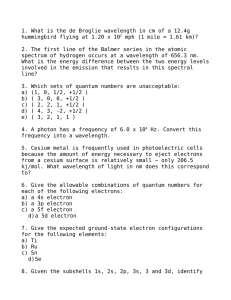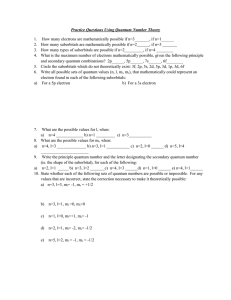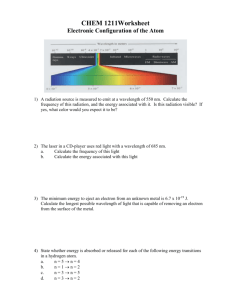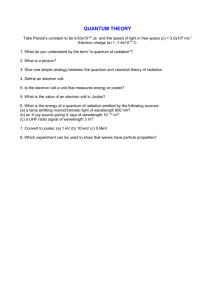Chapter 4 Review:
advertisement
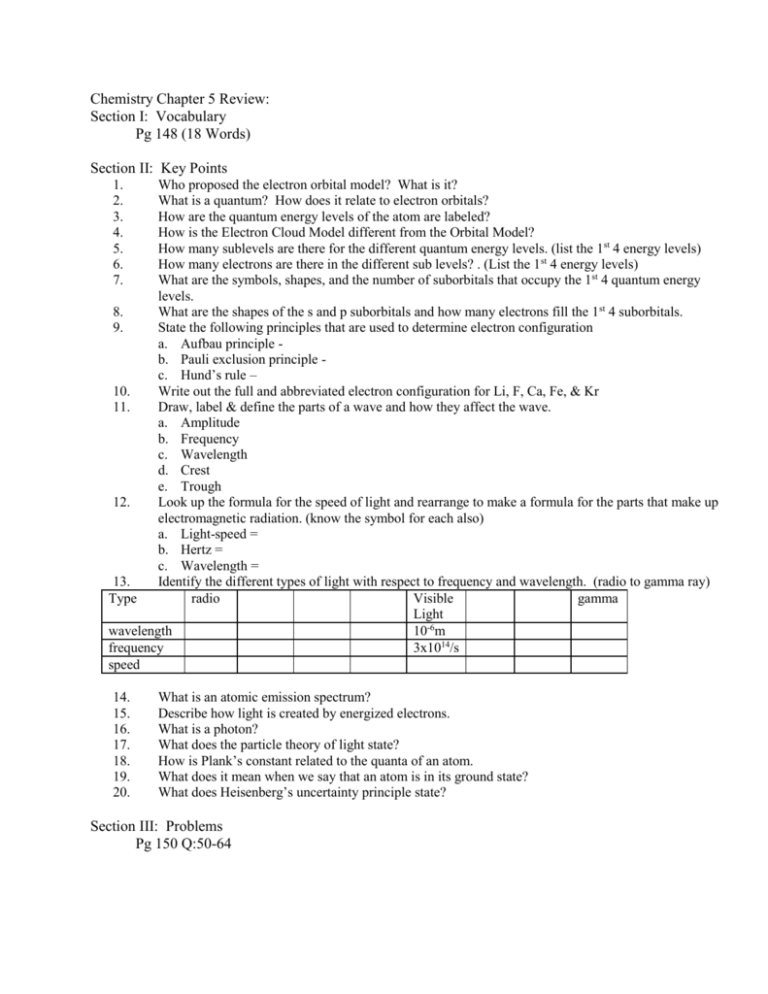
Chemistry Chapter 5 Review: Section I: Vocabulary Pg 148 (18 Words) Section II: Key Points 1. 2. 3. 4. 5. 6. 7. Who proposed the electron orbital model? What is it? What is a quantum? How does it relate to electron orbitals? How are the quantum energy levels of the atom are labeled? How is the Electron Cloud Model different from the Orbital Model? How many sublevels are there for the different quantum energy levels. (list the 1st 4 energy levels) How many electrons are there in the different sub levels? . (List the 1st 4 energy levels) What are the symbols, shapes, and the number of suborbitals that occupy the 1st 4 quantum energy levels. 8. What are the shapes of the s and p suborbitals and how many electrons fill the 1st 4 suborbitals. 9. State the following principles that are used to determine electron configuration a. Aufbau principle b. Pauli exclusion principle c. Hund’s rule – 10. Write out the full and abbreviated electron configuration for Li, F, Ca, Fe, & Kr 11. Draw, label & define the parts of a wave and how they affect the wave. a. Amplitude b. Frequency c. Wavelength d. Crest e. Trough 12. Look up the formula for the speed of light and rearrange to make a formula for the parts that make up electromagnetic radiation. (know the symbol for each also) a. Light-speed = b. Hertz = c. Wavelength = 13. Identify the different types of light with respect to frequency and wavelength. (radio to gamma ray) Type radio Visible gamma Light wavelength 10-6m frequency 3x1014/s speed 14. 15. 16. 17. 18. 19. 20. What is an atomic emission spectrum? Describe how light is created by energized electrons. What is a photon? What does the particle theory of light state? How is Plank’s constant related to the quanta of an atom. What does it mean when we say that an atom is in its ground state? What does Heisenberg’s uncertainty principle state? Section III: Problems Pg 150 Q:50-64





